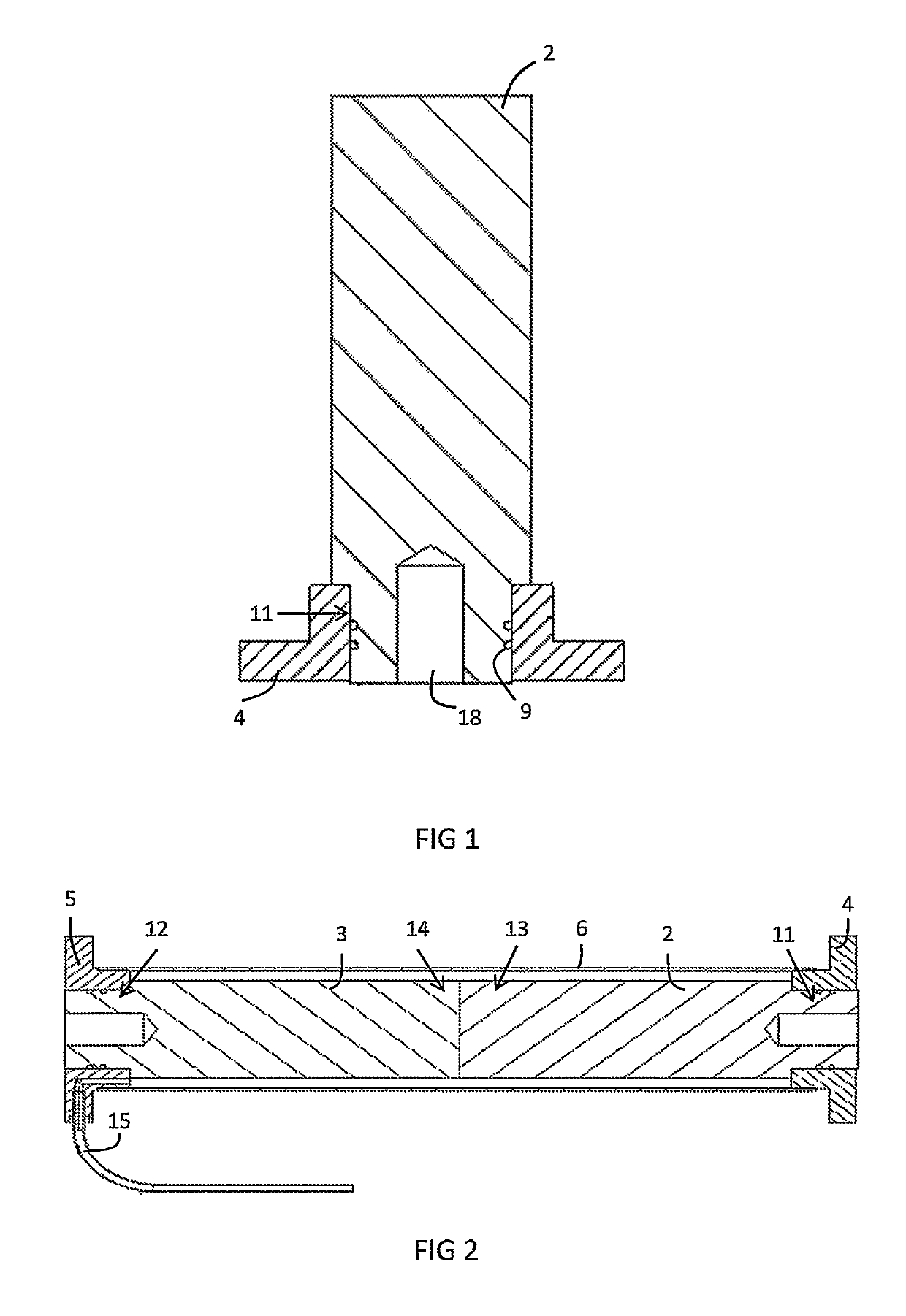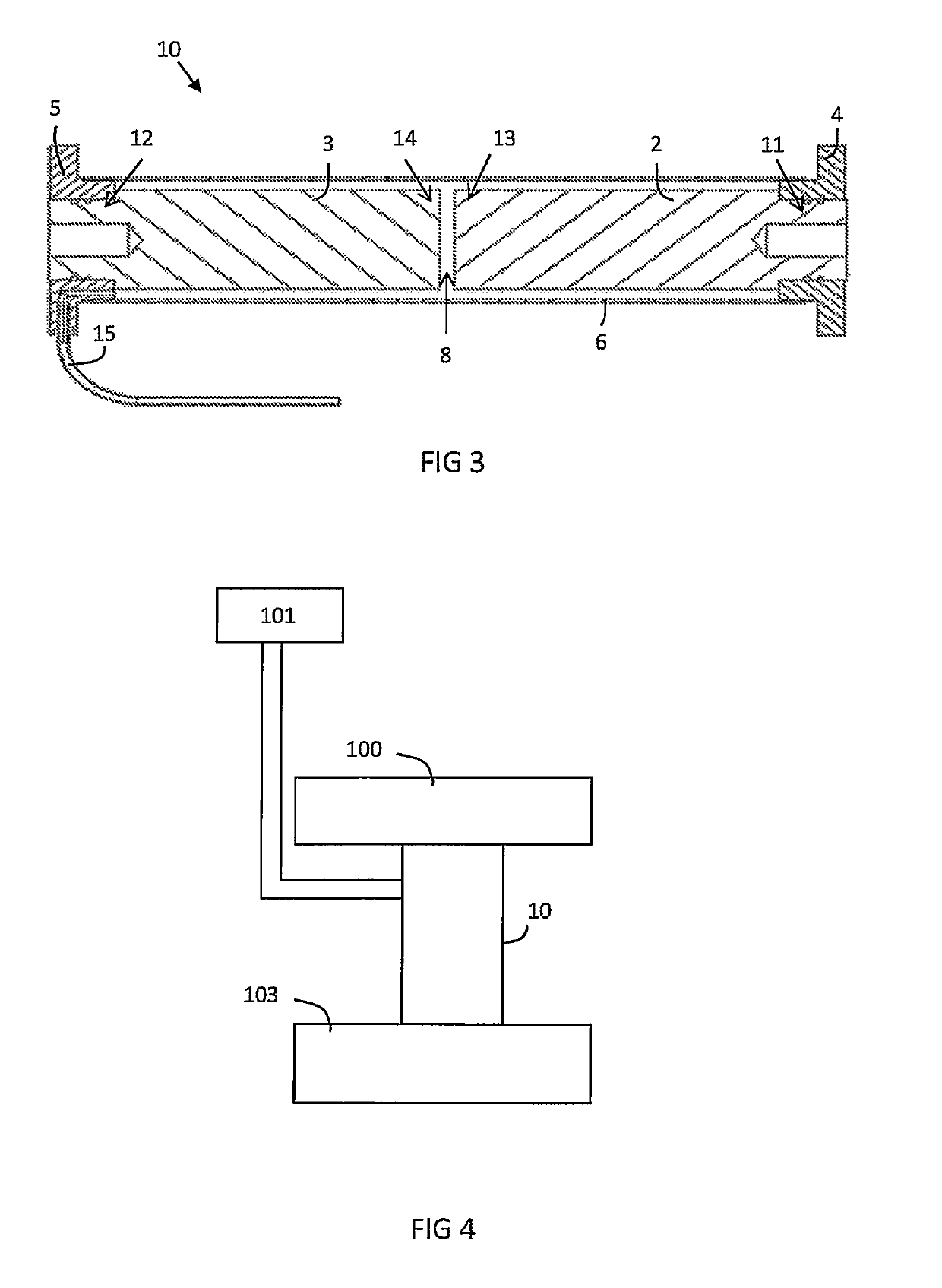Method of Forming a Heat Switch
a heat switch and gas gap technology, applied in the field of cryogenics, can solve the problems of difficult manufacturing of high-performance switches using interdigitated design, poor heat transfer properties, and no heat transfer path available, and achieve excellent heat transfer, high integrity and strength, and robust joints.
- Summary
- Abstract
- Description
- Claims
- Application Information
AI Technical Summary
Benefits of technology
Problems solved by technology
Method used
Image
Examples
Embodiment Construction
[0056]An embodiment of a method for forming a thermal contraction gas gap heat switch 10, as well as an embodiment of this switch 10, will be discussed with reference to the flow chart of FIG. 5 as well as the accompanying drawings of FIGS. 1 to 3.
[0057]First and second conductors 2, 3 are provided at step 300 of FIG. 5. A sectional view of a first conductor 2 and a first connecting member in the form of a first flange 4 is provided in FIG. 1. The first conductor 2 is elongate and substantially cylindrical. The first flange 4 comprises a central bore with a diameter of about 1 cm, which engages with a first end portion 11 of the first conductor 2. The first end portion 11 has a diameter of 1 cm along its length, whereas the remainder of the conductor 2 has a larger constant diameter of 2 cm along its length, such that the first flange 4 is fitted onto and around the first end portion 11 only as a collar. The first end portion 11 comprises a central bore 18 for enabling a physical co...
PUM
 Login to View More
Login to View More Abstract
Description
Claims
Application Information
 Login to View More
Login to View More - Generate Ideas
- Intellectual Property
- Life Sciences
- Materials
- Tech Scout
- Unparalleled Data Quality
- Higher Quality Content
- 60% Fewer Hallucinations
Browse by: Latest US Patents, China's latest patents, Technical Efficacy Thesaurus, Application Domain, Technology Topic, Popular Technical Reports.
© 2025 PatSnap. All rights reserved.Legal|Privacy policy|Modern Slavery Act Transparency Statement|Sitemap|About US| Contact US: help@patsnap.com



